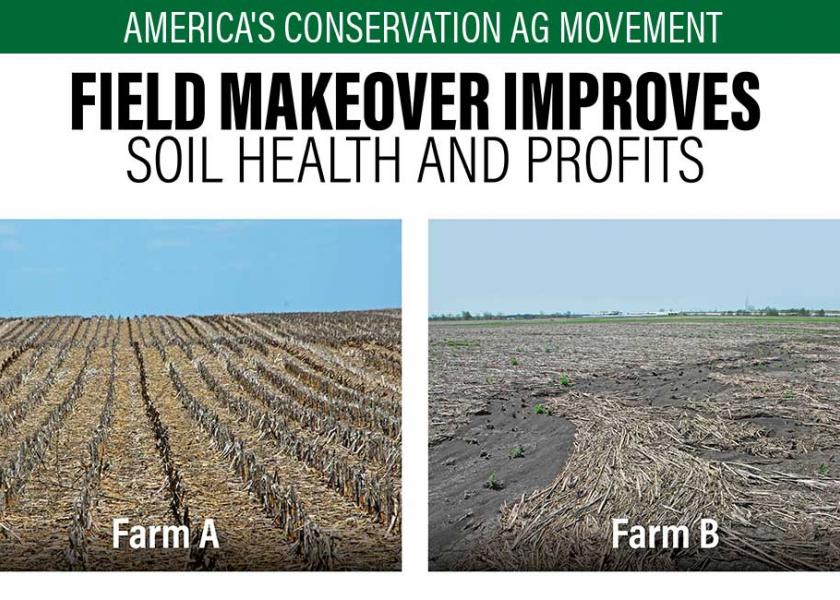Save Fuel, Labor And Equipment Costs With Conservation Tillage

Building trust in food begins with empowering farmers through one of the largest and most diverse conservation- and sustainability-focused public-private partnerships in our nation’s history: America’s Conservation Ag Movement. To find the latest news and resources related to the Movement, visit AgWeb.com/ACAM.
If you’re wondering where to start with conservation practices on your farm, consider moving to reduced or no tillage first.
That might give you the results you want to achieve most quickly—improved crop yields and soil quality—according to Charles Shapiro, emeritus professor of agronomy and horticulture, University of Nebraska.
“Reducing tillage would make the biggest difference right away for someone with erodible ground,” Shapiro says. “Not tilling can help you protect soils throughout the year, and then consider adding cover crops as your second practice.”
Shapiro told AgriTalk host Chip Flory on Monday that while those are his two go-to recommendations in many agronomic situations, ultimately the conservation practice you adopt first needs to depend on your location and fields.
“Consider what’s most vulnerable on your farm,” Shapiro says.
Borg Family Farms near Allen, Neb., adopted no-till more than 35 years ago and recently added some cover crops to the operational mix, says Debbie Borg. The family raises corn, soybeans and alfalfa and integrates cattle and chicken manure as nutrient sources for the row crops, contributing to the full circle of natural resource usage.
“No-till takes some time to get used to and the fields can be hard to look at the first couple of years,” Borg says, noting that no-tilled fields aren’t attractive in a traditional sense.
On the upside, she says, no-till has helped her family reduce their labor and production costs, including fuel.
Just switching from continuous conventional till to seasonal no-till saves a little more than 3.2 gallons of fuel per acre, according to a 2017 USDA-NRCS report available here: https://bit.ly/3heVE3B
A farmer who plows 15 acres per hour, for instance, would save roughly 67 hours of work with each eliminated pass over a 1,000-acre operation by adopting no-till. Depending on labor costs and equipment maintenance, that’s several thousand dollars saved each year.
Other benefits: Fields managed using no-till for multiple years generally have a higher water holding capacity than conventionally tilled fields. This is particularly valuable in drought-prone areas, where lack of water is a major concern tied to crop loss. No-till adoption also reduces soil erosion, increases soil biological activity and increases soil organic matter.
“The improvements don’t happen in one year,” Borg notes. “It’s a marathon and sometimes there’s a little pain, but once you get over it there are many benefits.”
Borg and Shapiro were featured speakers in the America’s Conservation Ag Movement recent program addressing conservation opportunities in the Bazile Watershed, which is located in northeast Nebraska.
Their respective conservation presentations can be listened to on demand for free at https://bit.ly/35jfOqP
During the AgriTalk segment, Flory asked Shapiro whether regulations and penalties could address the need for farmers to adopt conservation practices better and faster.
“We have a lot of laws about a lot of things, and people still break them,” Shapiro responded. “People have to change what’s between their ears. When you change people’s thinking, you don’t need the laws and regulations.”
America’s Conservation Ag Movement is organized by Trust In Food, a Farm Journal initiative, in partnership with the Farm Journal Foundation. Financial and technical support is provided by USDA’s Natural Resources Conservation Service and leading agribusinesses, food companies and nonprofit organizations.
For all the latest conservation information, go to: www.agweb.com/ACAM
Q&A: How Mycorrhizal Fungi Can Improve Soil Health
How Farms Can Adapt Hiring For Greater Resilience And Diversity







